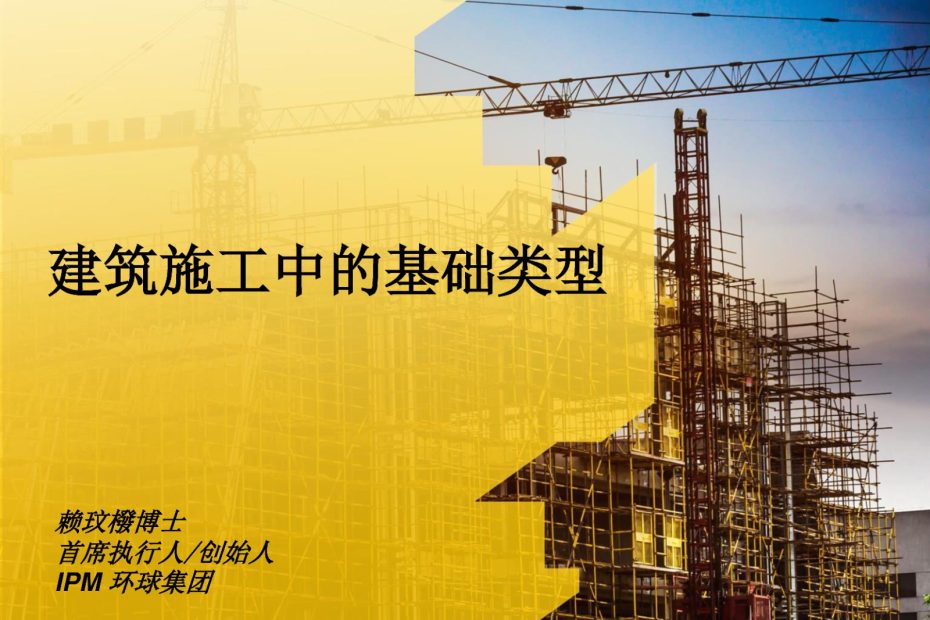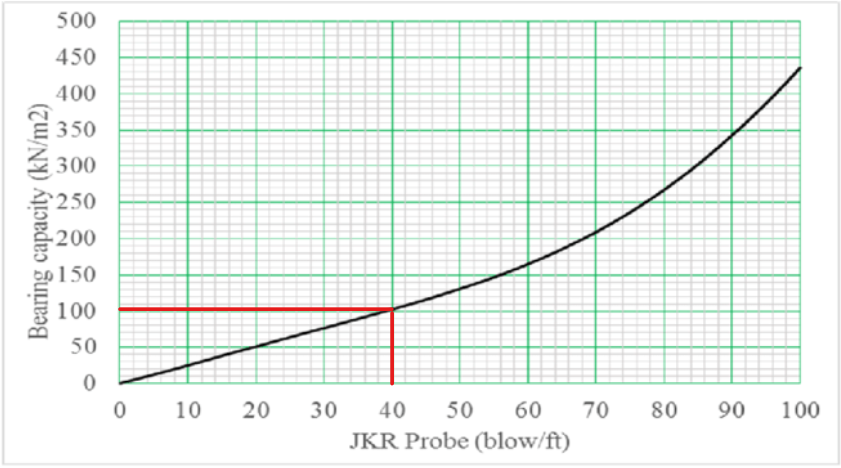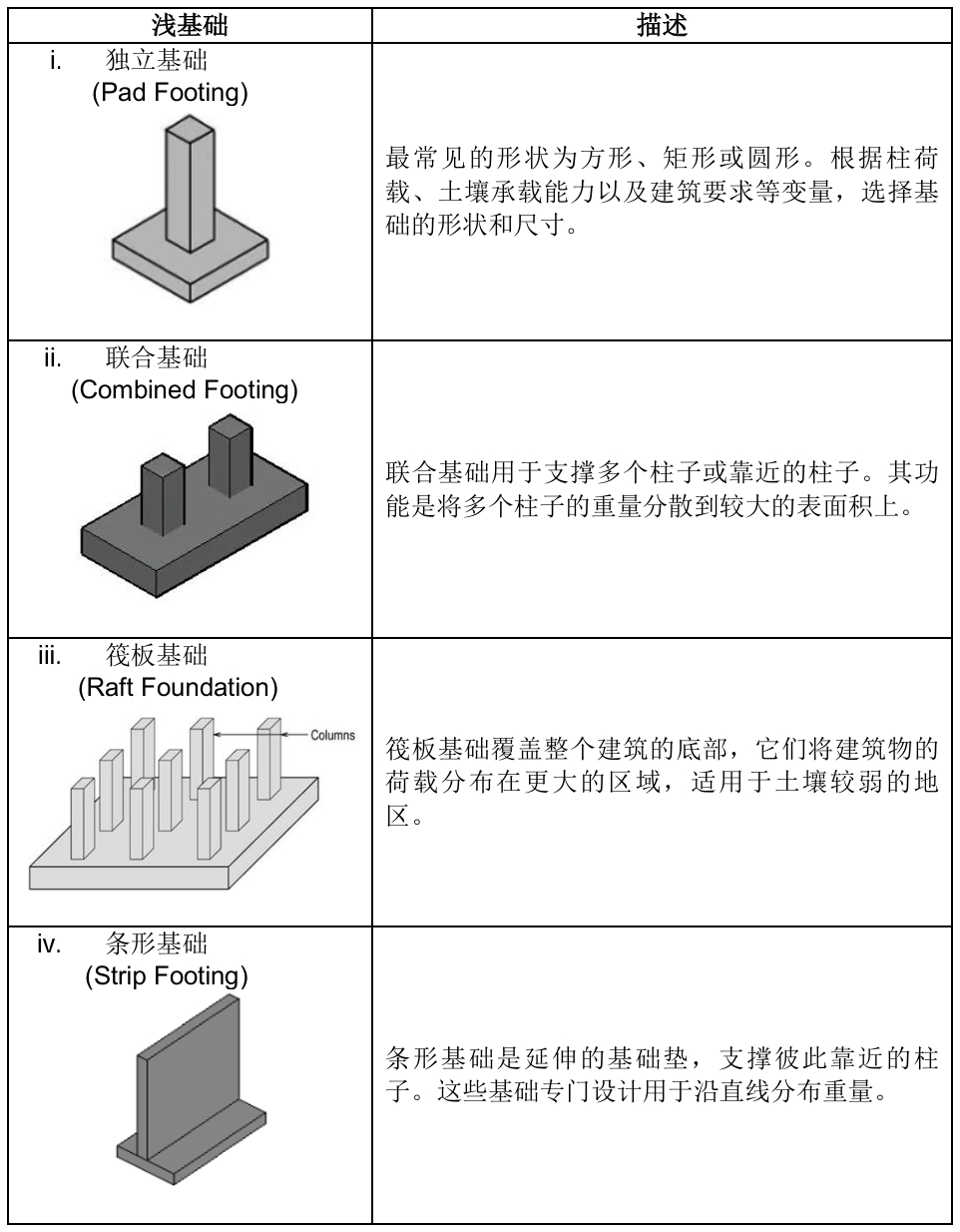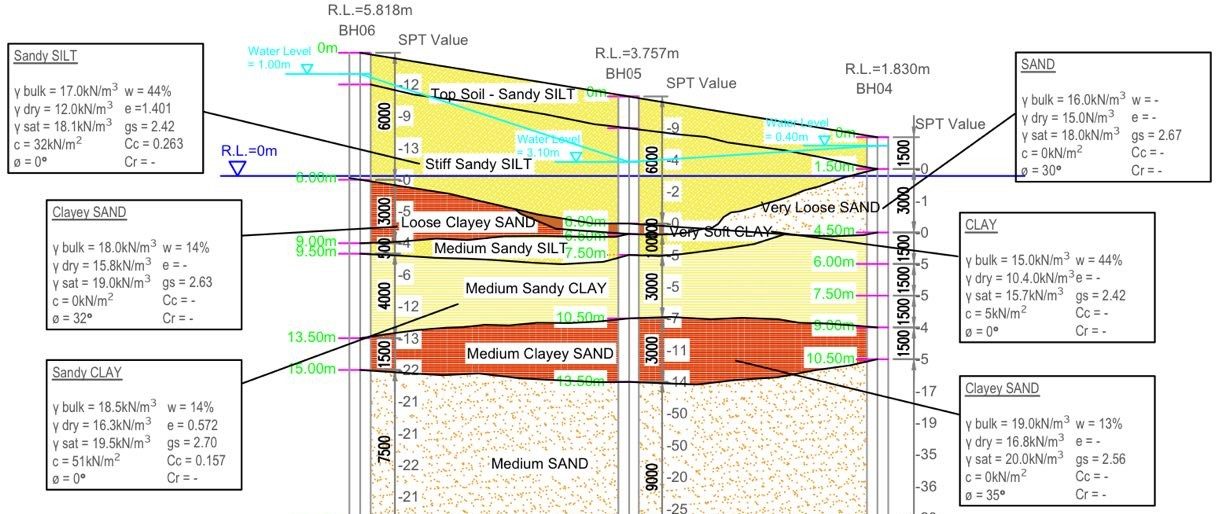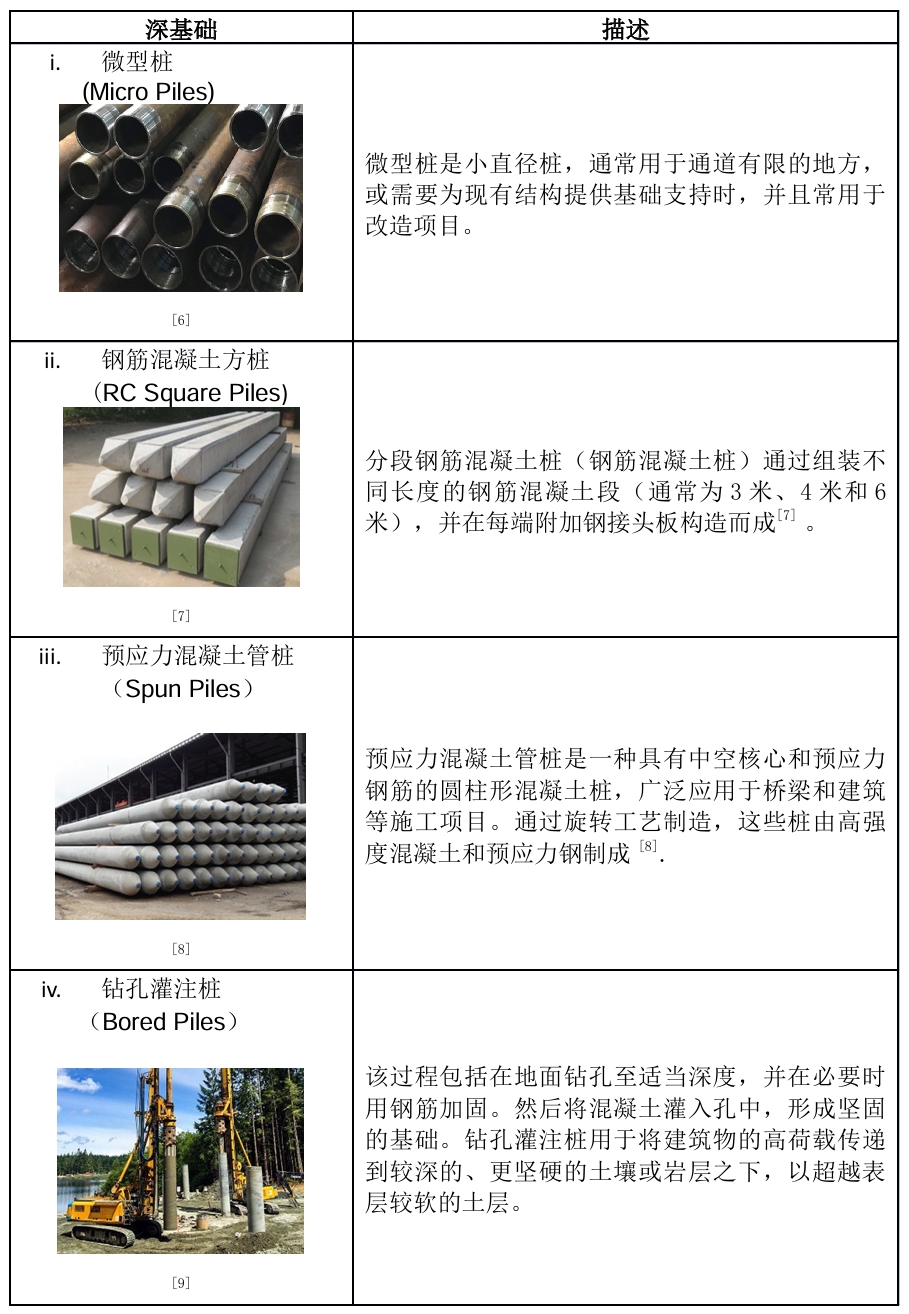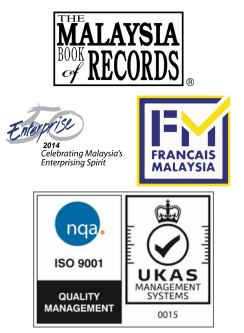作者: 赖玟橃博士| 2024年4月28日
简介
建筑物通常由两个主要部分组成:上部结构(地面以上)和下部结构(地面以下)。基础被称为下部结构。它们通过提供关键的支撑和稳定性,确保结构能够经受住时间和环境压力的考验。根据土壤性质、建筑物类型和承载要求等不同因素,施工中使用不同类型的基础[1] 。本文将进一步讨论这些基础的重要性,并阐明它们的区别。
基础分类
基础通常分为两大类:
1. 浅基础:
浅基础是构造在地面附近,并将重量传递到相对较浅的地层(通常为1至3米)。这种基础类型通常用于轻型结构,如住宅、商店、保安室、小型工厂等,每根柱子的最大承载力不超过50吨。浅基础的最低要求是具有中等(坚实)上层土壤,这种土壤非常适合于低层建筑(< 5层)[2] 。通过JKR/Mackintosh 探测测试 (JKR/Mackintosh Probe Test)来确定土壤的承载能力[2] 。
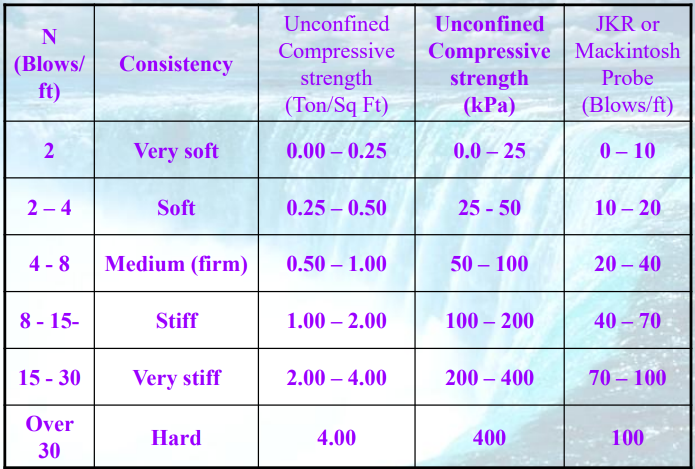
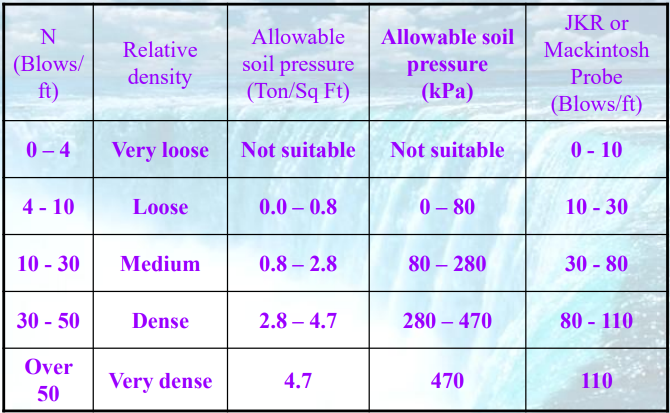
- 下图展示了探测测试的击打次数/英尺与土壤承载能力之间的关系。
根据原位土壤承载能力来设计垫脚基础的大小。基于原位土壤承载能力,结构荷载越大,对地面的压力越大,所需的垫脚基础大小也就越大,反之亦然。
浅基础根据其形状、大小和总体设计进一步细分为以下几种类型[3]:
深基础是在较深的位置构建的,至少在三米深度处分散重量。承载层(土承载)和摩擦阻力对桩的稳定性至关重要[4]。
标准贯入试验(Standard Penetration Test,SPT) 用于测量击打次数(N值)。N值用于确定地层、无粘性土的相对密度和剪切阻力角,以及粘性土的粘结性。这是通过利用岩土工程概念进行的测试。通常,测试在N值为50时终止,除非工程师另有规定[5]。
总结
综上所述,浅基础或深基础技术的选择取决于现场的地质条件、荷载要求等因素。浅基础适合坚硬土壤和较轻荷载,而深基础在软/松土壤及承载重型建筑物时表现更佳。需要进行详细的土壤研究和精心设计,以确保基础的整体安全性和稳定性。
赖玟橃博士
首席执行官/创始人
IPM 环球集团
参考文献:
[1] Madeh Izat Hamakareem (n.d.). Foundation Selection Criteria for Buildings. The Constructor. Retrieved on 28th April 2024 from https://theconstructor.org/geotechnical/foundation-selection-criteria/6971/
[2] Mohd Fairus Yusof (2017) Correlation of JKR Probe with Undrained Shear Strength. MATEC. Retrieved on 28th April 2024 from https://www.matec-conferences.org/articles/matecconf/pdf/2017/17/matecconf_iscee2017_07009.pdf
[3] Indeed Editorial Team (2022, June 25). Foundation Types in Construction: Definition and 5 Primary Types. Indeed. Retrieved on 28th April 2024 from https://www.indeed.com/career-advice/career-development/foundations-types
[4] Hamzah M. Beakawi Al-Hashemi (2016, Jan). End Bearing Capacity of Pile Foundation. University of Bahrain. Retrieved on 28th April 2024 from https://www.researchgate.net/publication/309533940_End_Bearing_Capacity_of_Pile_Foundations
[5] PRD RIGS (2023, June 15). Standard Penetration Test (SPT) for soils – All You Need to Know. Retrieved on 28th April 2024 from https://www.linkedin.com/pulse/standard-penetration-test-spt-soils-all-you-need/
[6] John Lawrie (n.d.). Threading For Micropile. Retrieved on 28th April 2024 from https://www.johnlawriemetals.com/old/tubulars-2/micropile
[7] DUASIA PADUSEJATI (n.d.). Pile Production. Retrieved on 28th April 2024 from https://duasia.co.id/index.php/pile-production
[8] Top-Base Method (M) Sdn. Bhd. (n.d.). Pile Foundations. Retrieved on 28th April 2024 from https://topbasemethod.com/spun-piles-malaysia/
[9] Henry Drilling (n.d.). Bored Piles. Retrieved on 28th April 2024 from https://www.henrydrilling.com/bored-piles/
**本中文译本仅供参考之用。如中文译本之文义与英文原文有歧义,概以英文原文为准。
